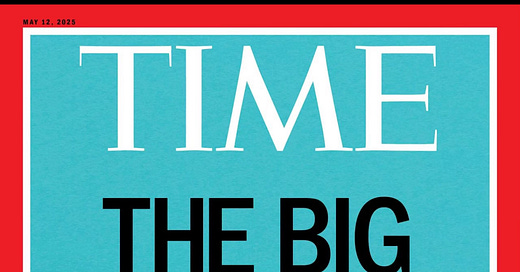The hype about GLP-1 drugs for Type 2 diabetes and/or obesity reached new heights as TIME dipped into the abyss of obsequiousness with its recent cover story about drugmaker Eli Lilly and research on a new oral pill to compete with the current injectable products.
Let’s count the top 10 superlative phrases:
“The Big Promise”
“could transform the future of health”
“the country’s most dynamic pharmaceutical company”
“the unique culture at the pharma giant”
“the pill, called orforglipron, was a success”
“the promise and excitement around orforglipron”
“All of this could unlock a huge financial windfall for Lilly.”
“Most drug companies are lucky to have one breakthrough or blockbuster drug at a time. Lilly has two (and counting).”
“All of this has made Lilly the most valuable drug company in the world and potentially on its way to becoming the first trillion-dollar health care company.”
“If orforglipron is successful, it will go down as probably the best business development deal in the history of pharma,” says the Lilly CEO.
Remember: this was not an Eli Lilly PR news release, but a news magazine cover story.
Journalism is supposed to vet the claims made by the people they cover. It is not good journalism to use - or allow people you quote to use, without independent experts weighing in - such lofty, subjective terms as “transform…most dynamic…unique…success…promise and excitement…breakthrough or blockbuster…most valuable…best business development deal in the history of pharma.” In fact, the lack of any independent expert comment in this 3,200-word story is remarkable. It’s like TIME was handing Lilly a free gift basket of praise.
It is also not the job of health care journalism to quote drug company officials who try to expand the market for their drug before it’s even approved by the FDA and before it’s even on the market - and again, without any independent expert perspective - as with this quote:
“We can think about its use in disease beyond Type 2 diabetes and obesity,” said Lilly’s chief scientific officer.
TIME didn’t discuss the potential cost of the new drug. But it praised the Lilly Direct program that sells medicine directly to consumers “and for those paying out of pocket, at a slightly lower cost.” But it didn’t mention any of the criticism of this program from a variety of sources.
The cover story is mostly an ode to Lilly management. The story almost seemed to giggle with excitement over its arrangement with the company:
Lilly executives took TIME inside the complex process of developing the new pill that unfolded over a series of conversations and a visit to the company's headquarters and labs in Indianapolis to detail both the scientific advancements as well as the unique culture at the pharma giant that made the drug possible.
Contrast that with the story from The New York Times in this same time frame.
The following excerpts show The New York Times adding perspective that was lacking in the long TIME piece.
It reminded readers that “it is unclear whether the nation’s health secretary, Robert F. Kennedy Jr., will weigh in…He has criticized GLP-1 medications in the past, saying that people would be better off eating healthy food.”
“How much do we know about Eli Lilly’s results? The company issued a summary of its trial findings in a news release, as drugmakers are required to do with data that could move their stock price. The company has not disclosed detailed scientific data — that will come later at a diabetes conference and in a medical journal — and outside experts have not reviewed it. It is possible that when the drug is used in many more patients the benefits could be smaller, and the side effects more common or worse.”
“the medication is expected to be expensive in the United States.”
It provided some details on six other companies developing their own GLP-1 pills.
“Even if there’s a pill on the market, the injectable drugs are expected to remain popular and widely used. Some patients like the idea of just a weekly shot, said Dr. Rudolph Leibel, a diabetes and obesity expert at Columbia University.”
The New York Times included caveats, a reminder that Lilly hasn’t disclosed detailed data yet, at least a brief mention of cost, details on alternative drugs in development, and independent expert perspectives. For these reasons, I rate The New York Times story as far better than the TIME cover story. It discussed more of the issues that readers need to think about when hearing about a new drug. It provided less cheerleading and more fundamentally important information.
I want to emphasize: the research on the Lilly pill - and on other companies’ pills - is being followed very closely because of the potential impact these drugs could have, with an emphasis on potential. The litany of superlatives in the TIME article was, in my opinion, premature and breathtaking - and not in a good sense.







Wow! Time’s hype is off the charts. I hope Lilly is successful, but there’s hard science yet to come and it will likely be thoroughly scrutinized. So many drugs over the years have been badly hyped at the expense of the public’s health. There are always side effects, it seems, once they get to market. Lesson: no magic panaceas!